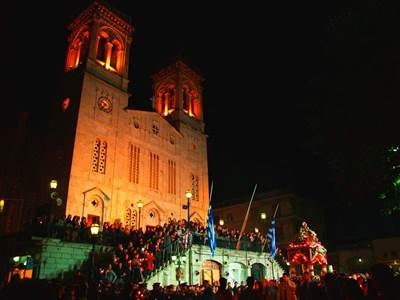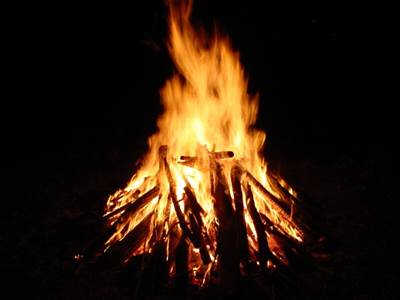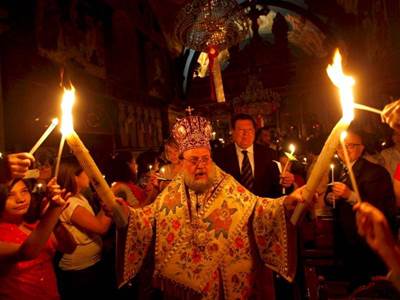Greek Easter 2017
Easter is the most sacred holiday of the Greek year and in the Greek Orthodox Church, and is celebrated with many local customs and traditions.
Greek Orthodox Easter usually falls one to five weeks after the western (Protestant, Catholic) Easter, while approximately once every four years it falls on the same date. It is an excellent time to be in Crete, both for the beautiful and moving religious ceremonies and for the days of feasting and celebrating which follow. Especially if you make for a smallish Cretan village, you may well find yourself an honorary member for this period.
In 2017, the Greek Orthodox Easter falls on Sunday April 16th. Clean Monday Apokries (Kathara Deftera) is a bank holiday and marks the start of Lent and 49 days of fasting, although nowadays few people strictly fast for the whole of Lent.
Easter fasting excludes meat, fish (but not seafood), eggs, oil and dairy products from the diet. The week leading up to Easter is known as Holy Week (Megali Evdomada) and this is when most people are fasting very strict. Church services are held throughout Holy Week.
The women color the eggs red (symbolizing the blood of Christ) and bake Easter biscuits tsourekakia and kalitsounia (cheese pies), to be eaten after Easter Saturday when the fast ends (of course some people cannot resist to wait).
The first great ceremony takes place on Good Friday. This is a day of mourning and churches usually ring out the death toll throughout the morning – a steady toll of one ring of the bell. At dusk the Epitafios, Christ’s funereal bier, lavishly decorated by the women and the children of the village. The evening church service starts around 19.00 PM and after the service, at around 20.30 PM, there is a subdued procession through the streets carrying the epitaph, or coffin, with the congregation following behind, usually all dressed in black.
Late Saturday or Easter Saturday (Megalo Sabbato) in all Cretan villages children spend their day preparing a bonfire and an image of Judas outside the church to burn after the midnight service.
The Anastasi, the Resurrection, takes place at midnight and is the culmination of Holy Week. Churches across Crete, Greece are packed from 23.00 PM onwards for the service and the lighting of the Holy Flame at midnight. At the stroke of midnight all lights in each crowded church are extinguished and the congregation plunged into the darkness which envelopes Christ as he passes through the underworld. Then there is a faint glimmer of light behind the altar screen before the priest appears holding aloft a lighted taper and chanting “Afto to fos … ” (This is the light of the world). Stepping down to the level of the parishioners he touches his flame to the unit candle of the nearest worshiper and intoning “Defte, lavethe fos” (Come take the light) to be greeted by the response “Hristos Anesti” (Christ is risen).
And so it goes round, this affirmation of the miracle, until the entire church is ablaze with burning candles. Later as the church bells ring, the celebrations begin with fireworks and the burning of the effigies of Judas. The traditional greeting as firecrackers explode all around you, is Hristos Anesti and the reply Alithos Anesti (He is risen indeed). In the week leading up to Easter Sunday, you should wish “Kalo Pasxa” (Happy Easter) or Xronia Polla (Many Happy Returns).
The 40-day fast ends at midnight today so meat is back on the menu and a meal of magiritsa (a soup based on lamb tribe, rice and lemon) is quite usual. Many restaurants and tavernas are open after the midnight service and many Cretans celebrate the Anastasi and Easter at a taverna or a place with live music.
Easter Sunday the tradition is lamb roasting and family with good friends (you could be one of them) usually get together for a big party with plenty of food, wine, music, and dancing. Traditionally, families meet with children and go to their original villages to celebrate this very special day.
The lamb of the Easter Sunday is a symbol for the sacrifice of Jesus, who was sacrificed like a lamb for the salvation of people.









